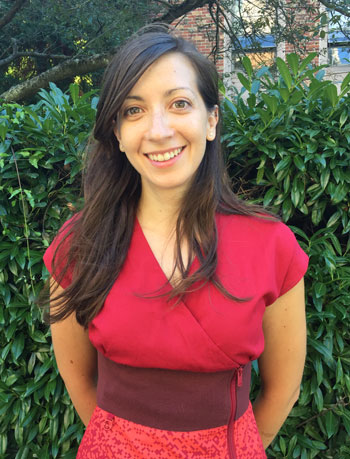
A version of this story was originally published in the Spring 2013 UW SRP eBulletin.
A new approach to identifying and characterizing an individual's exposure to organophosphorus (OP) compounds has been developed by researcher Judit Marsillach and her colleagues in the Superfund Research Program laboratory of Dr. Clement Furlong.1 OPs are among the most common causes of poisoning worldwide, with three million cases of pesticide poisonings per year.2,3 Recent gains in effective biomonitoring of human agricultural OP exposures allow for improved assessment of exposure risks leading to the protection of human health. Although OP compounds were initially developed as toxic nerve agents in wartime, today OP compounds can also be found in flame retardants, plasticizers, jet engine lubricants and pesticides.
Dr. Marsillach's innovative use of mass spectrometry (MS) to analyze protein modifications (OP-adducted enzymes), for detection of exposure will most likely replace the current standard method of measuring blood cholinesterase inhibition by activity measurements. This new MS protocol has advantages over blood cholinesterase characterization methods as it eliminates the need for a pre-exposure blood draw for measuring an individual's baseline activity. More importantly, with the single draw, a very accurate determination of the percentage modification of the OP adducted biomarker protein is obtained, offering a much more accurate analysis than the existing two blood draw enzymatic protocol.
Agricultural workers in both Washington State and California are part of state monitoring programs for individuals who are at high risk for OP exposure. The Furlong lab protocol includes a simple finger stick blood sample, dabbed onto a collection paper and mailed in an envelope to a laboratory for analysis. With the higher sensitivity that MS analysis of biomarker proteins provides, accurate information is obtained about low-level exposures; and with the use of a second, longer-lived biomarker protein, the time window for analysis is extended almost three-fold.
Citations
1) Marsillach J, Hsieh EJ, Richter RJ, Maccoss MJ, Furlong CE. 2013. Proteomic analysis of adducted butyrylcholinesterase for biomonitoring organophosphorus exposures. Chem Biol Interact 203(1):85-90.
2) World Health Organization. Informal consultation on planning strategy for the prevention of pesticide poisoning. Geneva, 25-29 November 1985. WHONBC/86.926.(Geneva: WHO, 1986).
3) World Health Organization. Public health impact of pesticides used in agriculture. (Geneva: WHO, 1990).
Pictured above, left to right: Drs. Ed Hsieh and Judit Marsillach at the Mike MacCoss Laboratory in UW Genome Sciences.

